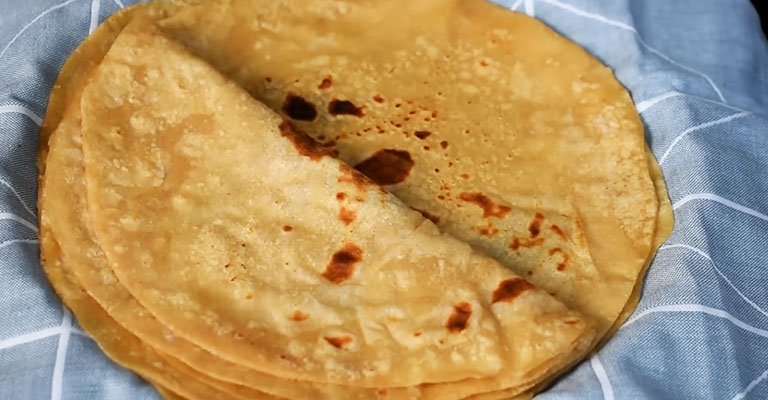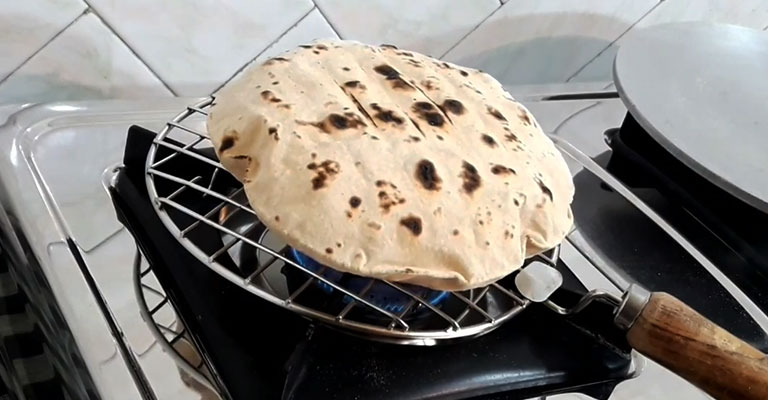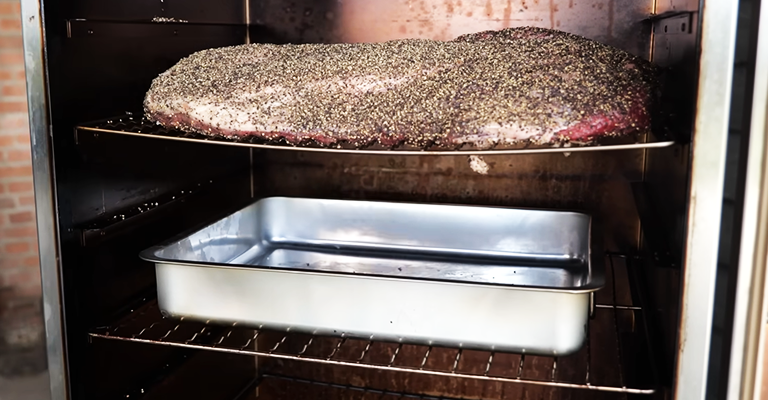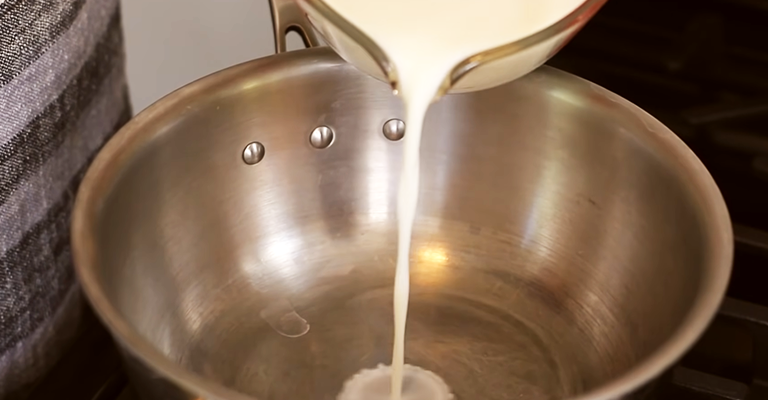Why Is My Roti So Hard?-Explore the Actual Reasons
The art of crafting the perfect roti, soft and pliable, is a cherished skill in many households. Yet, there are moments when the outcome falls short, yielding a disappointingly hard texture. This phenomenon prompts a quest for understanding.
Several factors contribute to this culinary puzzle, ranging from the kneading technique to the resting period of the dough.
The quality of the flour and its hydration level are pivotal. Additionally, the cooking process demands precision—the right temperature, timing, and flipping technique all play vital roles.
In unraveling this mystery, we uncover not just a recipe, but the science and artistry behind achieving that cherished softness in every roti.

What is Roti?
Roti is a fundamental staple in South Asian cuisine, particularly in countries like India, Pakistan, Bangladesh, and Sri Lanka. It is a simple, unleavened flatbread made from wheat flour, water, and sometimes a pinch of salt.
The dough is kneaded to a soft, pliable consistency, then divided into portions and rolled into thin discs.
These discs are then cooked on a hot griddle or tava. Roti is an integral part of meals, often used to scoop up curries, vegetables, or meats. Its versatility and widespread popularity make it a cornerstone of Indian dining.
Beyond its practicality, roti holds cultural significance, symbolizing sustenance, sharing, and the heart of home-cooked meals.
Why Is My Roti So Hard?
When your roti (Indian flatbread) is turning out hard and tough instead of soft and pliable, there are several possible reasons for this issue. Roti is a staple food in many Indian households, and its preparation can be quite nuanced.
Here are some common reasons why your roti may be turning out hard:
Over-kneading the Dough
Over-kneading occurs when you work the dough too vigorously, causing the gluten strands to become overly tight.
This can result in a dense and tough texture. To avoid this, gently knead the dough until it comes together and feels smooth. You should be able to press your finger into it without too much resistance.
Inadequate Resting Time
Allowing the dough to rest is a critical step in roti-making. This period allows the gluten to relax, making the dough easier to work with.
It also helps in achieving a softer texture after cooking. Aim for at least 20-30 minutes of resting time, covered with a damp cloth.
Insufficient Water
The right amount of water is crucial for a pliable dough. If the dough feels dry or crumbly, it’s an indication that you need to add more water.
Gradually incorporate water until the dough comes together without being sticky. This will result in a softer, more manageable dough.
Improper Rolling Technique
When rolling out the dough, use a gentle touch. Applying too much pressure can lead to a thin, hard roti.
Start from the center and work your way outwards, rotating the dough as you go. Use a well-floured rolling pin to prevent sticking and maintain an even thickness.
Inadequate Cooking Time
Proper cooking time is crucial for achieving the right texture. Each side of the roti should be cooked until you see golden-brown spots forming. This indicates that the roti is fully cooked and will be soft and pliable.
Inconsistent Temperature
Ensure that your cooking surface is evenly heated. If it’s too hot, the roti may cook too quickly on the outside while remaining undercooked on the inside. Adjust the heat as needed to maintain a consistent temperature.
Expired Flour
Using fresh and good-quality flour is essential for successful roti-making. Older flour may have lost some of its moisture content, which can lead to harder roti.
Check the expiration date on your flour and replace it if needed.
Inadequate Dough Hydration
Finding the right balance of water and flour is key. The dough should be soft and pliable, but not overly sticky. Adjust the water or flour as needed to achieve the desired consistency.
Storing Roti Improperly
After cooking, it’s important to store roti correctly to maintain their softness. Wrap them in a clean, dry cloth or store them in an airtight container to prevent moisture loss.
Avoid leaving them exposed to air, as this can lead to hardening.
Inexperience
Remember, making perfect roti is a skill that improves with practice. Don’t be discouraged by initial attempts. Keep experimenting, and over time, you’ll develop a feel for the dough and the cooking process.
Effective Solutions for Hard Roti

When you’ve found yourself with a batch of hard roti, fret not. There are ways to salvage them and restore their softness.
Here are some solutions to turn those tough rotis into tender delights:
Steam Them
Place the hard roti in a steamer for a few minutes. The steam will infuse moisture back into the bread, making it softer.
Wrap in a Damp Cloth
Wrap the hard roti in a clean, damp cloth and leave them for a few minutes. The moisture from the cloth will seep into the roti, revitalizing their texture.
Microwave with a Damp Paper Towel
Dampen a paper towel and wrap it around the hard roti. Microwave for 10-20 seconds. The steam generated will soften the roti.
Use a Tortilla Warmer
When you have a tortilla warmer, place the hard roti inside and cover. Microwave for 30 seconds. The trapped heat will help soften the roti.
Brush with Ghee or Butter
Lightly brush both sides of the hard roti with ghee or butter. Then, warm them in a skillet. The added fat will help restore moisture.
Reheat on a Tava or Griddle
Place the hard roti on a hot tava or griddle. Cook each side for a few seconds, then press gently with a cloth to encourage puffing. This method helps redistribute moisture.
Wrap in Foil and Heat in the Oven
Wrap the hard roti in aluminum foil and place them in a preheated oven at 350°F (180°C) for 5-7 minutes. The enclosed heat will soften the roti.
Use a Roti Saver
When you have a roti saver, place the hard roti inside and close it. Leave for a few minutes, and the trapped steam will soften the bread.
Sprinkle with Water and Reheat
Sprinkle a little water on both sides of the hard roti. Warm them on a skillet, allowing the water to turn into steam and soften the bread.
Combine with Moist Ingredients
When possible, use the hard roti as a base for a dish that includes moist ingredients like curries or gravies. The moisture from the dish will seep into the roti, softening it.
Tips for Achieving Softer Rotis

Achieving soft and pliable rotis is an art, but with the right techniques, you can consistently make delicious flatbreads.
Here are some tips to help you achieve softer rotis:
Proper Dough Consistency
Begin with fresh, good-quality wheat flour. The dough should be soft and pliable, not too dry or sticky. Adjust the water or flour as needed.
Gentle Kneading
Avoid over-kneading the dough. Work it just enough to make it smooth. Overworking the dough can lead to tough rotis.
Adequate Resting Time
Allow the dough to rest for at least 20-30 minutes. This relaxes the gluten, making it easier to roll out and resulting in softer rotis.
Even Rolling
Roll out the dough evenly with gentle pressure. Rotate the dough as you roll to maintain an even thickness. Avoid pressing too hard to prevent tough rotis.
Cook on a Hot Griddle
Preheat the griddle to medium-high heat. It should be hot but not scorching. Cooking on a well-heated surface ensures even cooking and puffing.
Flip at the Right Time
Cook each side of the roti until you see small bubbles or brown spots forming. This indicates it’s time to flip. Waiting too long can result in hard rotis.
Gentle Pressing
After flipping, use a cloth or spatula to gently press down on the roti. This encourages puffing and ensures even cooking.
Use a Mesh or Direct Flame for Puffing
When possible, try puffing the roti directly over the flame using tongs. Alternatively, a mesh can be used for the same effect.
Store Properly
When making rotis in advance, store them in an airtight container or wrap them in foil. This prevents moisture loss and keeps them soft.
Practice and Patience
Making perfect rotis may take some practice. Don’t be discouraged by initial attempts. With time and experience, you’ll get the hang of it.
FAQs
Why are my rotis turning out hard?
Rotis can become hard due to factors like over-kneading the dough, insufficient resting time, or cooking at an incorrect temperature.
Can using expired flour result in hard rotis?
Yes, using old or expired flour can lead to hard rotis as it may have lost some of its moisture content.
Is overcooking a common reason for hard rotis?
Yes, cooking rotis for too long or at excessively high heat can lead to them becoming hard and less pliable.
How does inadequate hydration of the dough affect roti texture?
If the dough is too dry, it can be difficult to roll out, resulting in hard rotis. Conversely, overly wet dough can lead to a stickier texture.
Can I salvage hard rotis?
Yes, there are ways to revive hard rotis. Methods like steaming, microwaving with a damp paper towel, or brushing with ghee can help restore their softness
To Recap
The hardness of roti can be attributed to a combination of factors. Over-kneading the dough, insufficient resting time and incorrect cooking techniques are common culprits.
The quality and freshness of the flour, along with the proper hydration of the dough, also play crucial roles.
Achieving soft roti requires a delicate balance of these elements. However, even if your roti turns out hard, there are methods to revive them, such as steaming, microwaving with a damp towel, or brushing with ghee.
With practice, patience, and a keen understanding of these factors, you can consistently create soft, delectable roti that’s a delight to savor.


